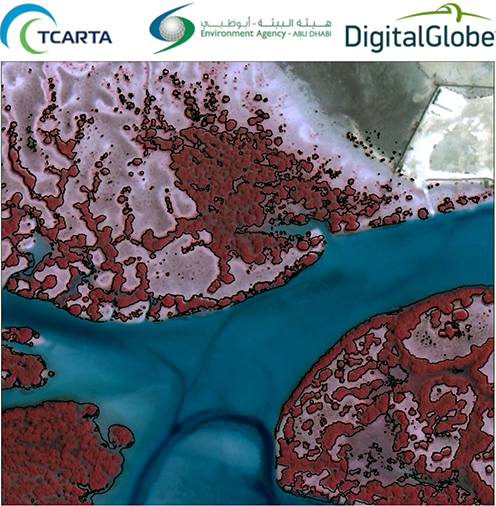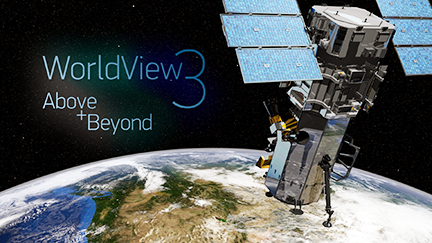
TCarta has been commissioned by Environment Agency – Abu Dhabi (EAD) to carry out a landmark mangrove health assessment covering the entire Emirate of Abu Dhabi — the assessment contains mangrove condition information derived from high-resolution multi-spectral satellite imagery.
For EAD, the TCarta report delivered some promising results. With 80 percent of the Emirate’s mangrove forests found to be healthy, this was encouraging news. The innovative project also enabled EAD to designate conservation areas for immediate protection. The data helped EAD to assess the relative success of existing schemes with the view to applying the lessons learned into practice for future endeavors.
Mangroves are shrubs or small trees that grow in the saline and brackish tidal marine ecosystems along coastal zones in tropical regions throughout the world. Considered vital to the environment, the dense root systems of mangrove forests protect estuaries and coastlines from erosion, and the leaves sequester carbon. They are, however, susceptible to damage from offshore dredging, onshore development, and climate change.

For the assessment, TCarta obtained high-resolution multi-spectral imagery acquired by the DigitalGlobe WorldView-2 and -3 satellites during the months of December through March. Computer algorithms were applied to the Coastal Blue, Visible Green, Visible Red and Near Infrared bands to differentiate mangroves from other vegetation across the Emirate. A total of 155 km2 of mangroves were identified and mapped.
Next, TCarta analysts obtained coarse-resolution Landsat imagery from 1987, 2001 and 2017 to chart mangrove coverage over three decades. The combination of WorldView and Landsat data analysis clearly showed where mangrove loss had occurred over time. From this, TCarta generated the Disturbance Index correlating health to external factors, such as urban development.
Based on the success of the Abu Dhabi project and accuracy of its results, TCarta is now offering the satellite-derived vegetation mapping and health assessment technique as a commercial service available worldwide.
Executive Comment
Chris Burnett, the TCarta Project Manager, said that as part of the assessment, the company created a Disturbance Index showing precisely where the most mangrove stress is occurring. EAD will use this data to determine — and potentially mitigate — the external factors causing the mangrove conditions to decline. The company derived several vegetation indices from the spectral bands to rate the health of the mangrove forests, divided into small grids. The satellite-derived vegetation analysis process TCarta developed for this project can be applied to large-area crop and forestry health mapping anywhere in the world. Urban development near Abu Dhabi City appears to pose the primary threat to the Emirate’s mangrove forests. EAD, which is a government agency tasked with protecting the local environment, will use this report for remediation efforts, including the selection of more favorable areas to plant new mangroves to balance those that have already been lost.

